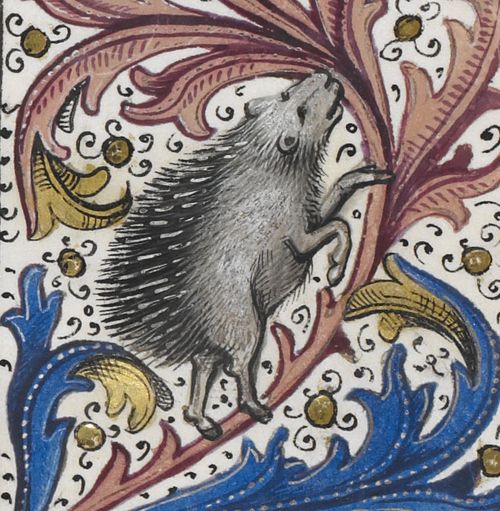Quirky History: A Monkey on My Back in Medieval Manuscripts
Have you ever wondered where the expression “monkey on my back” comes from? Fret no longer. Quirk Books is here to help with that dang monkey.
Medieval manuscripts are known for their beautiful illuminations, i.e., images that decorate the inside of initial letters, the margins, and the bottom of the pages. Here you find, for example, images depicting events from the Bible and portraits of saints.
But the illustrations on the pages of medieval manuscripts are also where you find the subversive, the satirical, and the allegorical of medieval social commentary. These images do not depict the sacred but the world turned upside down or animals behaving like human beings, often in the form of a parable bearing a Christian message.
No other animal featured in the margins of a medieval manuscript embodies these aspects more than the monkey.
Monkeys are commonly occurring in medieval manuscripts. In fact, they are so commonly occurring that “babewyn,” the Middle English word for symbolically charged animal antics in the margins of a manuscript, is derived from this animal. “Babewyn” means “baboon-like.”
Also, monkeys were featured in manuscripts to such an extent that the appearance of a monkey can mean several different things. To figure out what the monkey represents you need to look at the content of the text on the page, as well as the other images surrounding the monkey.
At first the monkey represented the devil. Then the meaning changed to represent the victim of the devil’s actions, namely the sinner. A striking way of depicting this symbolic aspect of the monkey could be to have the monkey ride the back of a goat. In the visual language of the Middle Ages both monkeys and goats were noted to be lascivious.

Also, the monkey was seen as an imitator of other’s behavior. The Latin word for monkey (and ape) is “simius,” which shares the same root as the Latin word for resemblance, “similitudo.” Consequently, medieval manuscripts are filled with images of monkeys aping human behavior.

And over time a Christian parable developed based on the monkey to teach the sinners about the virtues of a sin-free life.
The parable tells the story of a female monkey who carries around a pair of twins while being chased by hunters. She carries her favorite twin in her arms, while her not-so-beloved child holds on to her back. As the story goes, the monkey grows tired from the chase and drops her favorite child while the least loved child still holds on to her back.

The moral of this story is that mankind needs to let go of sin and frivolity, here represented by the favorite child, and instead dedicate our lives to performing pious deeds, which is the monkey on the back.




